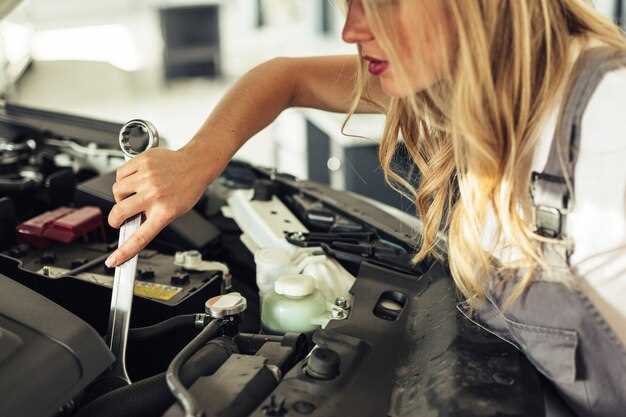
Maintaining optimal performance in your vehicle requires attention to various components, and the air filter is often an overlooked but crucial element. A clean air filter not only enhances fuel efficiency but also ensures that your engine performs at its best by filtering out harmful particles and contaminants. Over time, as dirt and debris accumulate, the air filter can become clogged, leading to reduced airflow and increased strain on the engine.
In this comprehensive guide, we will discuss the importance of regularly checking and replacing your car’s air filter. Understanding how to properly assess your filter’s condition can save you money in repairs and improve your vehicle’s longevity. We will also outline the steps involved in replacing the air filter, making it an easy DIY task for car owners.
Whether you’re a seasoned mechanic or a beginner, this guide will equip you with the knowledge you need to ensure that your engine breathes clear air. By the end, you’ll have the information necessary to keep your car running smoothly and efficiently.
How to Determine If Your Air Filter Needs Replacement

Regular maintenance of your vehicle includes checking the air filter, as it plays a crucial role in the engine’s performance. To determine if your air filter requires replacement, look for several key indicators.
First, inspect the filter visually. A clean air filter is typically white or light-colored. If you notice a significant buildup of dirt, dust, or debris, it likely needs replacing. A dirty filter can restrict airflow, leading to decreased engine efficiency.
Another sign is a decline in engine performance. If you experience reduced acceleration, loss of power, or poor fuel economy, a clogged air filter might be the culprit. The engine struggles to draw in enough air, affecting its ability to run smoothly.
Additionally, pay attention to unusual engine sounds. If the engine sounds rough or is producing unusual noises, it could indicate an air filter issue. Improved airflow can help restore smoother operation.
Furthermore, check the warning lights on your dashboard. Some vehicles are equipped with sensors that alert you when the air filter is dirty. If you see a warning light related to the engine or emissions, it’s wise to examine the air filter.
Lastly, refer to your vehicle’s owner manual for recommended air filter replacement intervals. Depending on driving conditions, you may need to replace it more frequently, especially if you drive in dusty or sandy environments.
By being attentive to these signs and performing regular checks, you can ensure that your vehicle runs efficiently and effectively.
Step-by-Step Instructions for Replacing Your Air Filter

Replacing your car’s air filter is a straightforward process that can improve your vehicle’s performance and maintain air quality inside the cabin. Follow these detailed steps to ensure a successful replacement.
- Gather Necessary Tools and Materials:
- New air filter (check your vehicle’s specifications)
- Screwdriver or socket set (depends on vehicle type)
- Clean cloth or vacuum (optional for cleaning)
- Locate the Air Filter Housing:
The air filter is typically located in the engine compartment. Refer to your owner’s manual to find the exact location.
- Open the Engine Compartment:
Use the hood release lever inside the vehicle and securely prop open the hood for access.
- Remove the Air Filter Housing Cover:
Using a screwdriver or socket, carefully unscrew or unclip the air filter housing cover to access the filter.
- Take Out the Old Air Filter:
Carefully pull out the old air filter from its housing. Take note of how it is positioned and any clips holding it in place.
- Clean the Air Filter Housing:
Use a clean cloth or a vacuum to remove any debris or dirt from the air filter housing before inserting the new filter.
- Insert the New Air Filter:
Place the new air filter into the housing, ensuring it fits snugly and is oriented in the same direction as the old filter.
- Reattach the Air Filter Housing Cover:
Screw or clip the housing cover back on, ensuring it is secure to prevent any air leaks.
- Close the Hood:
Lower the hood back into position and make sure it is securely closed.
- Test Your Vehicle:
Start your vehicle and listen for any unusual sounds. Ensure that the engine runs smoothly after the air filter replacement.
Regularly check and replace your air filter according to your vehicle’s maintenance schedule to maintain optimal performance.
Tips for Maintaining Your Air Filter for Optimal Performance
To ensure your vehicle’s air filter operates at its best, regular inspection is crucial. Aim to check your air filter every 12,000 to 15,000 miles, or more frequently if you drive in dusty or polluted conditions. A clean filter enhances air intake, which improves engine performance and fuel efficiency.
When inspecting the air filter, look for signs of dirt, dust buildup, or discoloration. If the filter appears clogged, it’s time for a replacement. Remember that some vehicles allow for easy access to the air filter, while others may require tools. Always consult your owner’s manual for specific instructions on locating and removing the air filter.
Use a vacuum cleaner with a nozzle attachment to remove loose debris during your inspection. This step can extend the life of your filter, allowing for better airflow. However, avoid using water or cleaning products that may damage the filtration material.
Consider the type of air filter you use. Premium filters, such as high-flow or reusable options, may provide better filtration and longevity compared to standard paper filters. Research brands and reviews to find reliable options that suit your driving needs.
Keep an eye on your vehicle’s performance indicators. If you notice a decrease in acceleration, a drop in fuel efficiency, or unusual engine noises, these may be signs that your air filter needs attention or replacement. Regular maintenance checks help prevent such issues from escalating.
Lastly, always replace the air filter at recommended intervals, even if it appears clean. Over time, filters can lose their effectiveness, reducing their ability to trap allergens, dust, and dirt. A new air filter is a simple and cost-effective way to maintain optimal engine performance.





